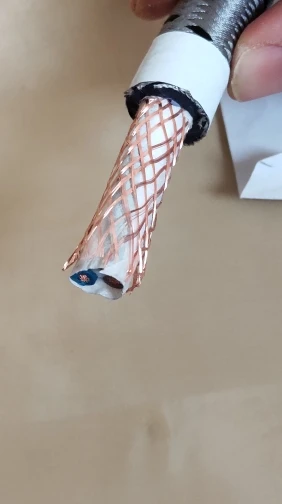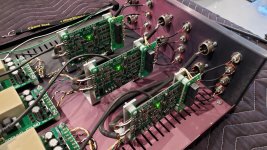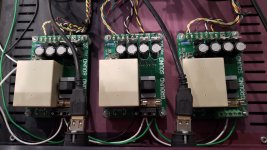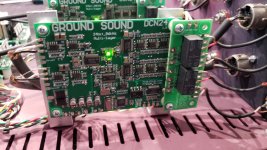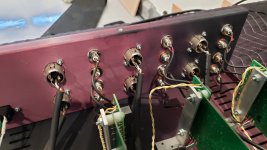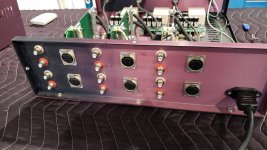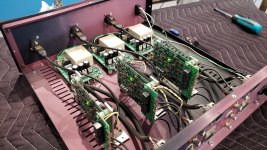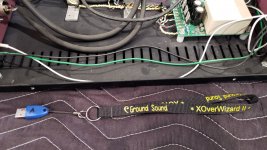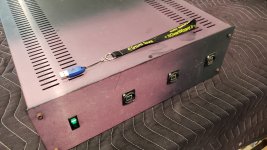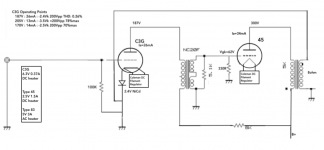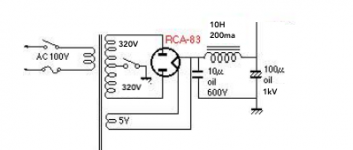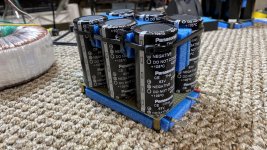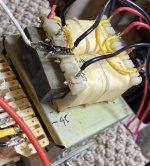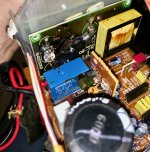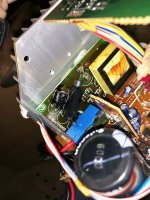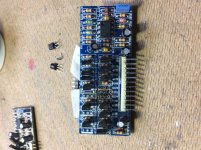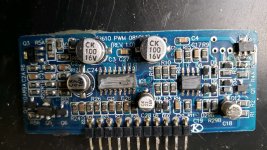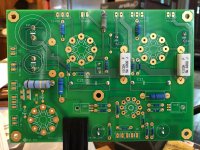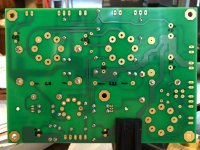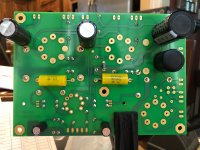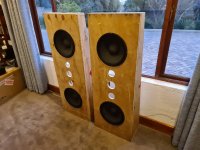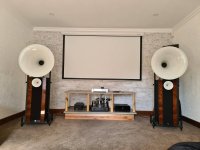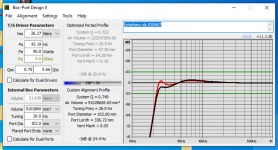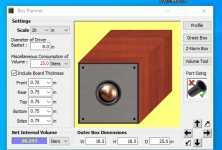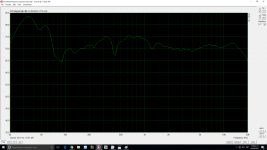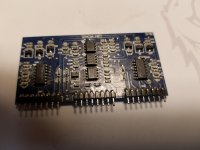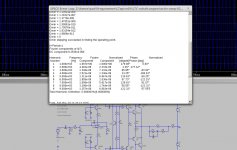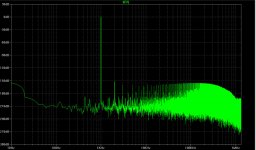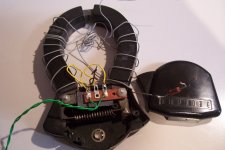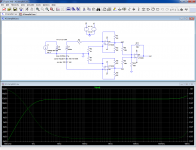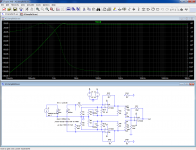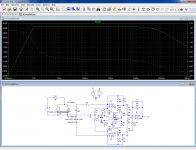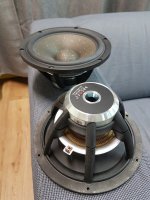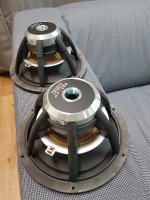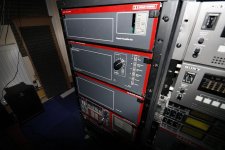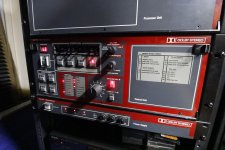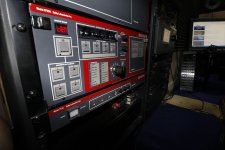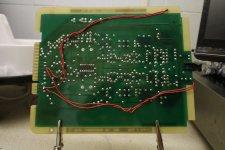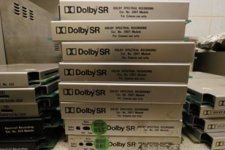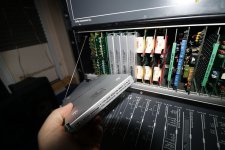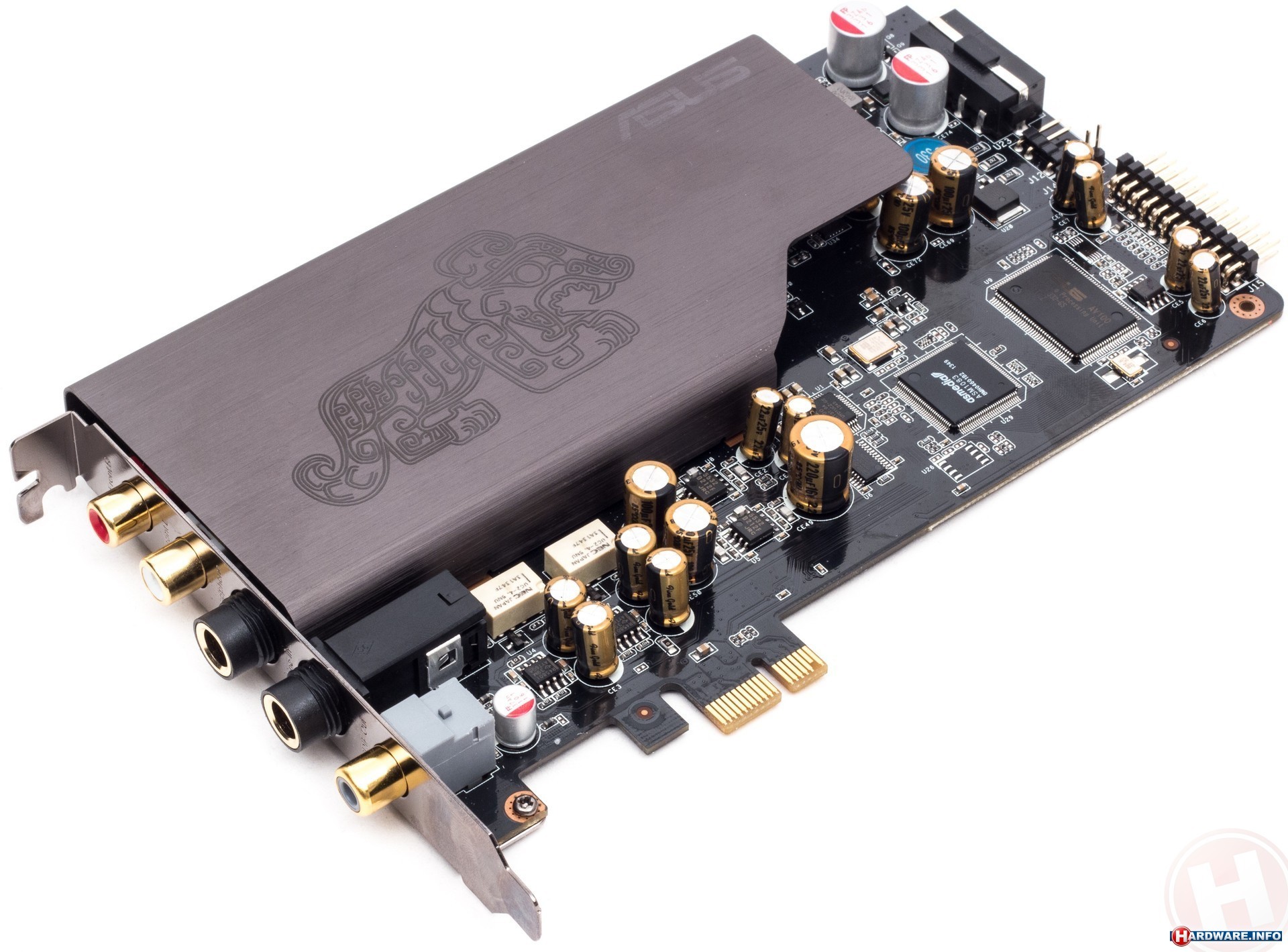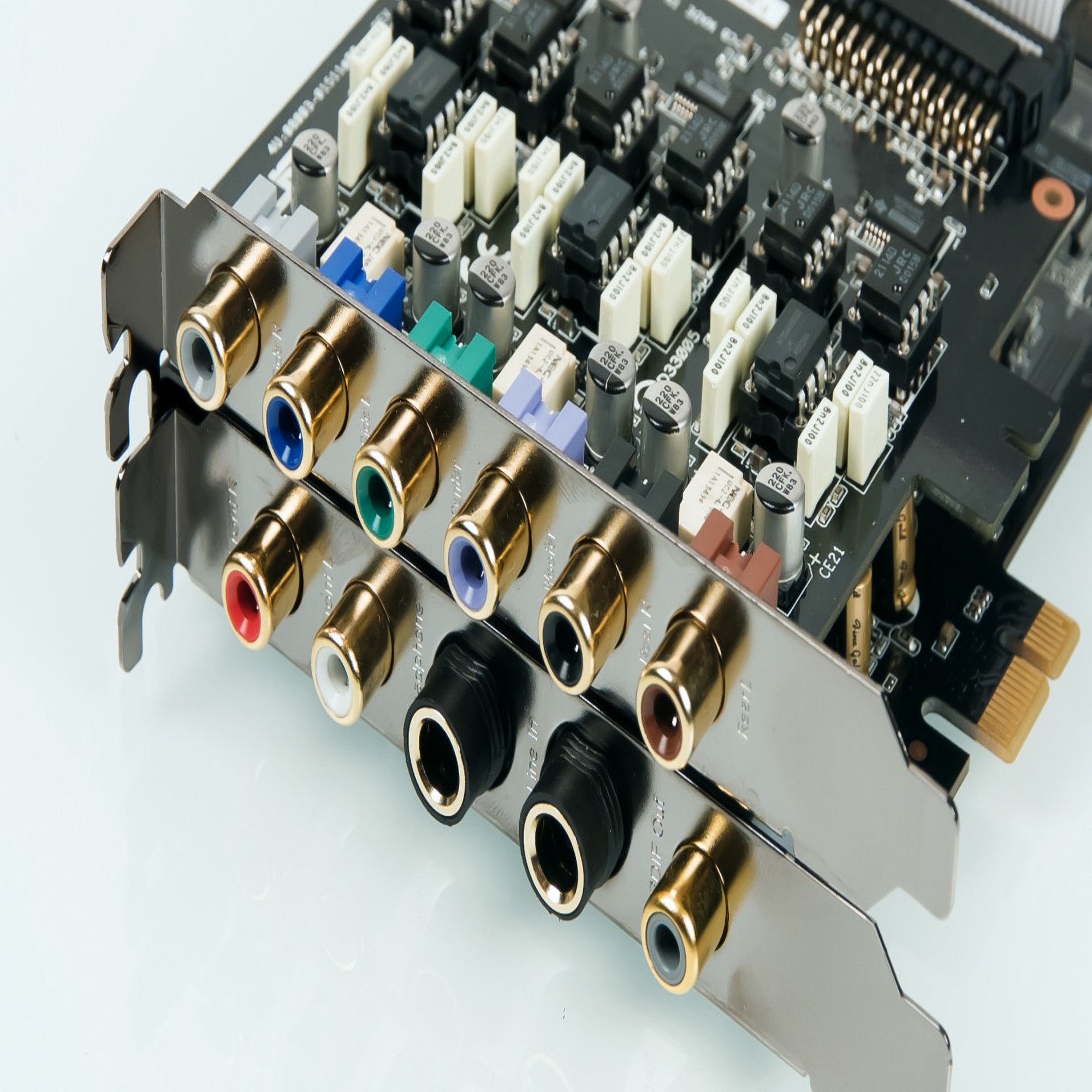I am currently trying to convert an old AC clamp meter into an instrument usable for all audio-frequency works.
The probe in question was an "Amprobe", probably made end '60s, early '70s and was part of a graphic recorder.
It is of a poor quality standard, and does not work as a real current transformer: its magnetizing inductance acts as a large part of the shunt, and it worked and was calibrated for a single frequency, 60 or 50Hz.
The detector used a selenium rectifier, which even at that time was already antiquated:
By adding a suitable electronic conditioning circuit, I hope to convert this piece of crap into something usable and accurate.
I have measured its characteristics: ~0.5H, DC resistance ~104 ohm.
Even with a perfect transimpedance input, this results in a LF cutoff >33Hz.
As I need 10x better, I have to compensate the winding resistance by a negative resistance.
Because of the poor shielding, I have opted for a balanced circuit:
R1, R5 define the gain and R3, 4, 6, 7 provide the negative resistance. R4 and R7 are non-inductive copper windings, to compensate the measurement windings.
The result looks attractive, with a response flat to under 1Hz, but that is in sim only: in reality, the circuit also needs to be DC-stable, which it won't be without additional measures.
The first idea to use a blocking cap in series with the winding is not practicable; the combination of low synthetic resistance with a large inductance and capacitance results in a huge VLF resonance.
An additional pole has to be introduced somewhere, but this is no simple task: if the pole has a frequency comparable to the one already present, it will create a large peak in the response.
The pole can be placed at a much higher frequency, but this will also kill the LF capability, and placing it at a much lower frequency results results in huge time-constants and bulky components.
There is another difficulty: for noise and dynamic range reasons, the range switching should be made directly at the transimpedance stage level.
This means switching the 4 resistors, plus the possible DC-blocking caps for each range, and I intend to implement 5 ranges: from 20mA to 200A.
That is a lot of contacts.
I opted for a tradeoff: the only switching at the TIA would be the unit: mA or A. The resistors would be 60 ohm or 60K.
The 3 subranges would be created downstream, by varying the gain. The 2mA range is probably not going to be usable, but it doesn't matter.
With the 60K, a capacitor would be inserted in series with the positive feedback resistor. This would still result in a DC gain >1000: awkward, but manageable:
With the 60 ohm, an additional trick is needed to avoid impossibly high capacitor values:
All of this could be made to work, but it is complicated, clumsy and inelegant.
There must be a cleverer way to implement it, but so far I couldn't think of one.
Any creative suggestion is welcome.
The circuit is essentially a zero-field circuit (the clamp is a transformer), but with the complication of multiple ranges
